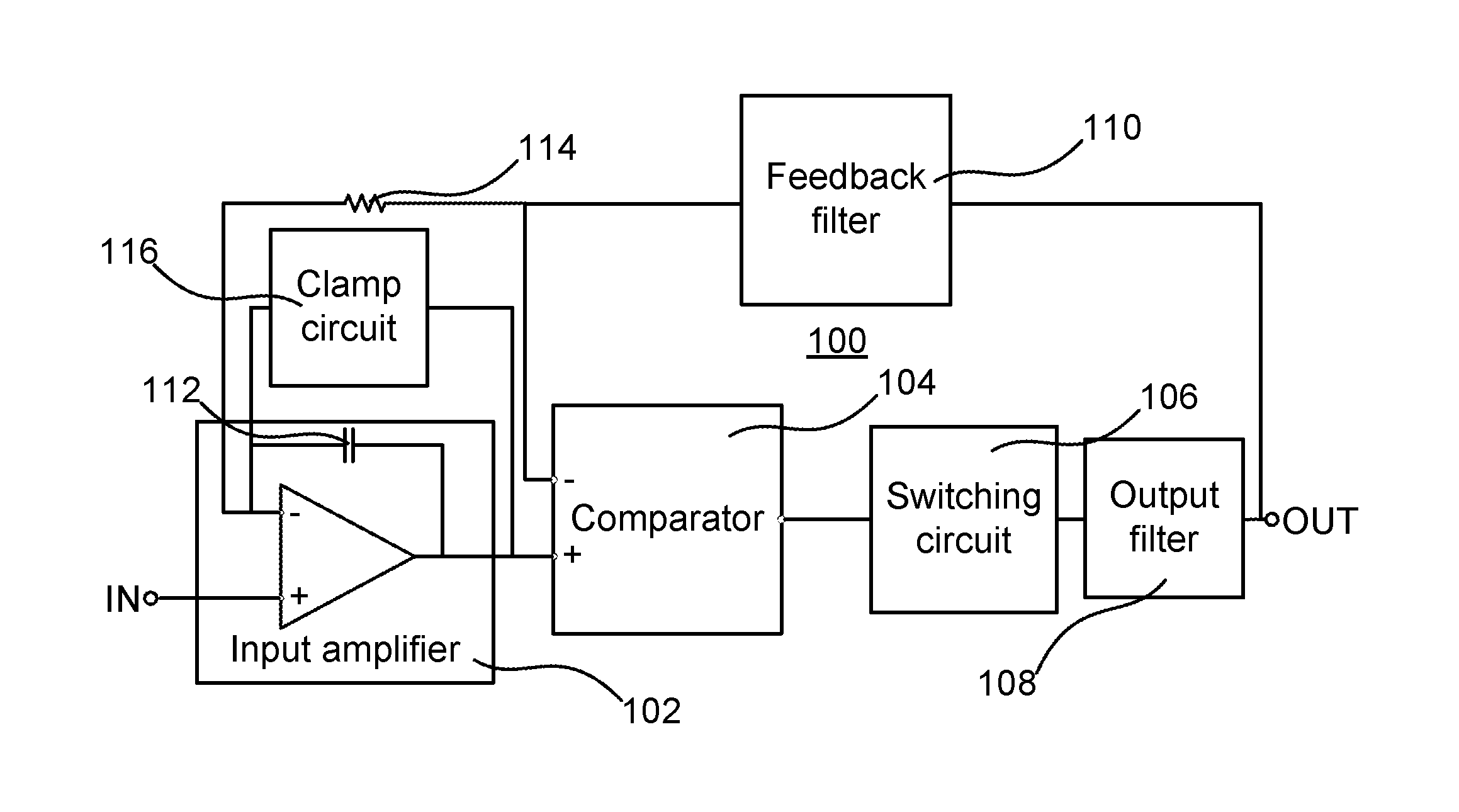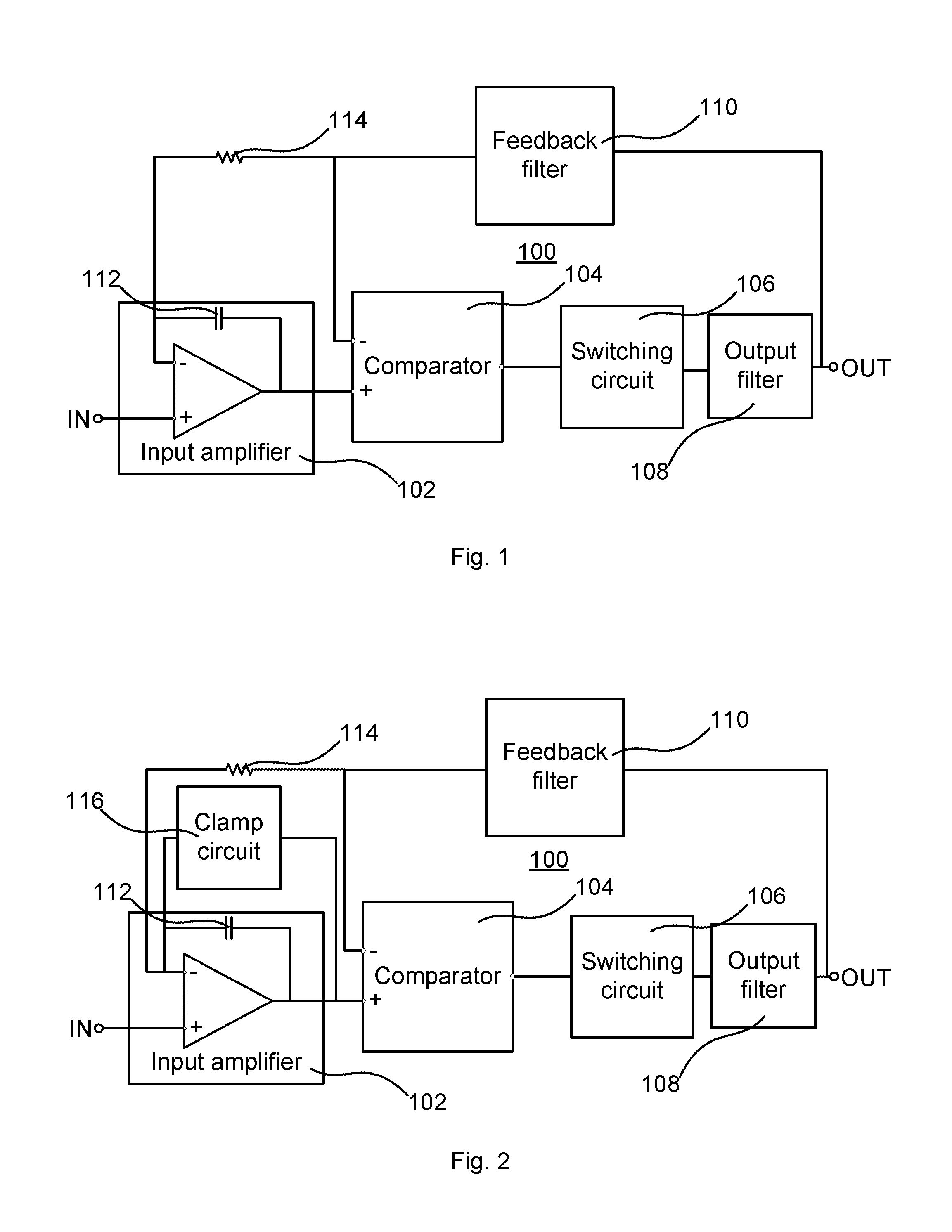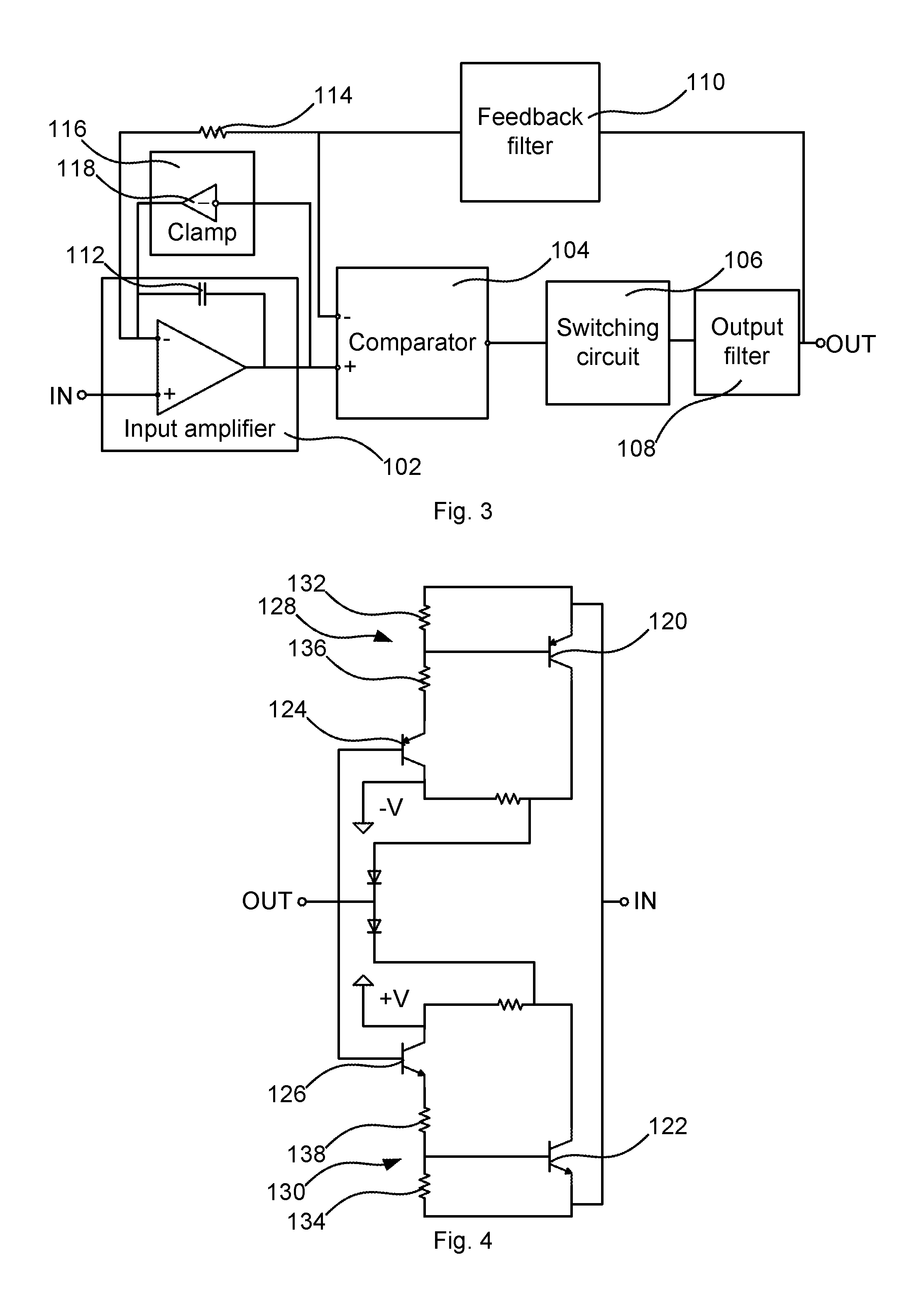Power amplifier
a power amplifier and amplifier technology, applied in the direction of low-frequency amplifiers, amplifier types, electrical equipment, etc., can solve the problems of low conduction loss, poor channel separation and power supply rejection, and lack of control over the demodulation filter
- Summary
- Abstract
- Description
- Claims
- Application Information
AI Technical Summary
Benefits of technology
Problems solved by technology
Method used
Image
Examples
Embodiment Construction
[0038]The disclosure below relates to a power amplifier for amplifying an electric input signal in an operational frequency range, e.g. audio frequency range, and providing an output signal. The principle of the power amplifier comprises switching means for generating a square wave signal by alternately switching the square wave signal to a first supply voltage or a second supply voltage, and filter means for generating a power output signal by low pass filtering the square wave signal. The power amplifier further comprises input means for receiving the electric signal and driving the switching means, and a local feedback circuit connecting the output signal towards an input of the switching means, as will be further elucidated below.
[0039]FIG. 1 schematically illustrates a power amplifier 100 according to an embodiment. The power amplifier 100 comprises an input amplifier 102, a comparator 104, a switching circuit 106, an output filter 108 and a feedback filter 110. The respective ...
PUM
 Login to View More
Login to View More Abstract
Description
Claims
Application Information
 Login to View More
Login to View More - R&D
- Intellectual Property
- Life Sciences
- Materials
- Tech Scout
- Unparalleled Data Quality
- Higher Quality Content
- 60% Fewer Hallucinations
Browse by: Latest US Patents, China's latest patents, Technical Efficacy Thesaurus, Application Domain, Technology Topic, Popular Technical Reports.
© 2025 PatSnap. All rights reserved.Legal|Privacy policy|Modern Slavery Act Transparency Statement|Sitemap|About US| Contact US: help@patsnap.com



